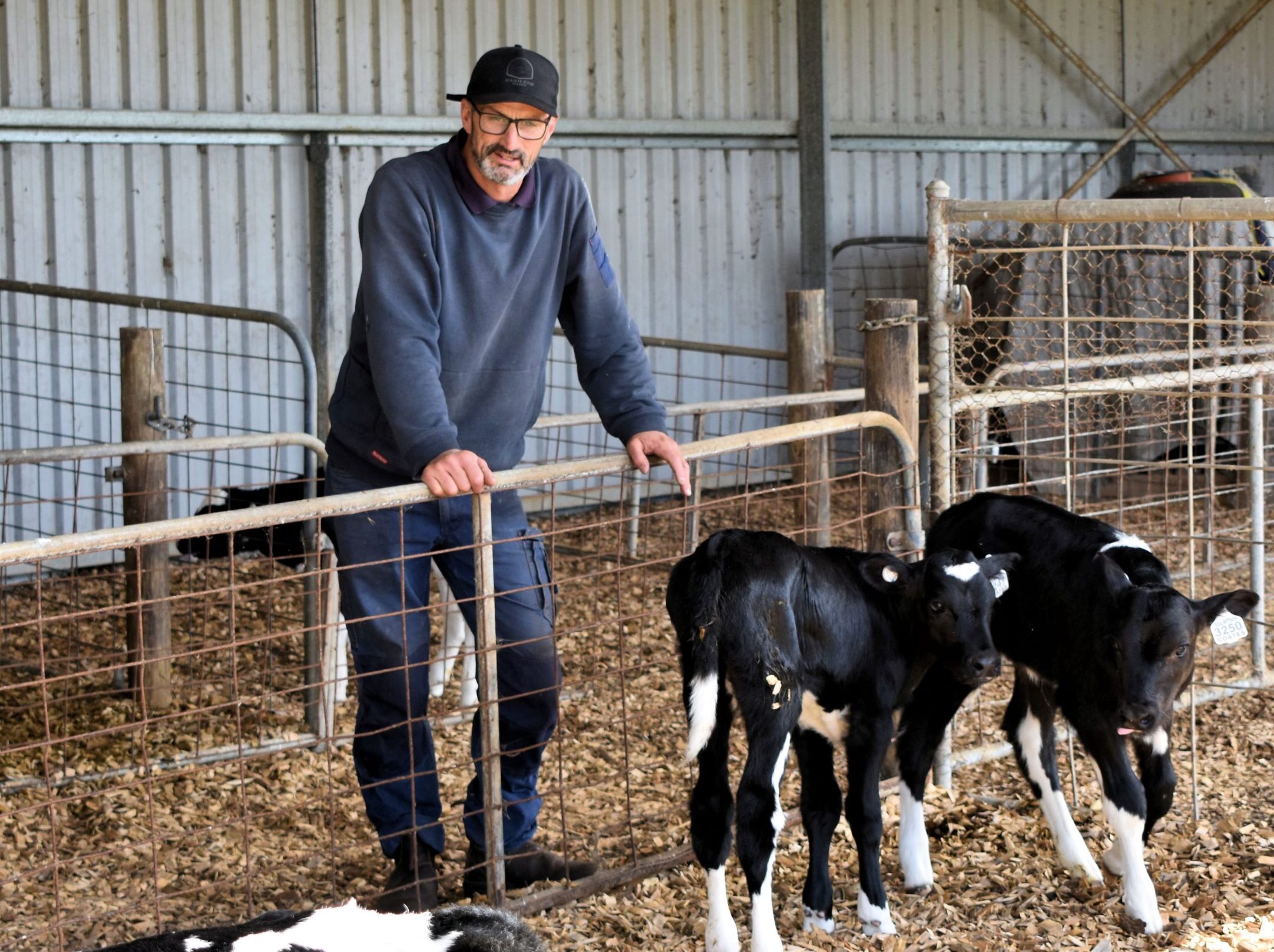Reliable information empowers decision making
Coates family
Region: Western Victoria
Topic: Genomic testing
Reliable and accurate data collection is the cornerstone of Jake Coates’ dairy breeding program. The Western Victorian dairy farmer says the more he knows, the better when it comes to genetics and breeding.
“Genomics is yet another tool we can use to gather more data and build more reliability into our decision process,” Jake said.

Jake, his wife Olivia, daughter Charlee (14) and son Isaak (13) milk 150 Holsteins on 140 hectares at Allestree, near Portland, Victoria. Their cows graze perennial pastures throughout the year, with an additional 120 hectares of outpaddocks used for growing young stock and expanding their small beef program.
For decades, the Coates herd has remained consistently in the top 10% for Balanced Performance Index (BPI), the index that reflects the traits that contribute to profit. Jake is confident he can maintain his herd’s ranking by concentrating on genetics supported by reliable data.
He uses DataGene’s Good Bulls App to guide his bull selection and the Genetic Progress Report to monitor the impact of his decisions on the herd’s genetic merit.
He said they give him the confidence to discuss the bull recommendations given by breeding sales representatives and ensure the bulls he selects reflect his breeding goals.
“The Good Bulls App is gold,” he said. “I can look up the bulls they are suggesting, see if they fit my system, and avoid the bulls that may not be complementary to what I need.”
Using the filter tool, Jake sets a benchmark for priority traits and enjoys tweaking the selection criteria to customise a team of bulls that best suits his breeding program.
“It gives me the power to ask the questions and tell the rep what I want,” he said.
“I tell them . . . does this bull fit our parameters? Is this bull going to take us backwards? If they don’t fit – then they need to come up with something else.”
In the past, Jake relied solely on herd test results and management issues when making his selection and culling decisions.
He is now using genomic testing to apply additional pressure on replacement heifer selection.
The genomic results have also given Jake the confidence to use traits he hadn’t used previously.
“A trait like daughter fertility was not something I had considered greatly,” Jake said, admitting that prior to genomics, he had viewed fertility as influenced mostly by nutrition and management.
“Now with genomics, I find I am more open to newer traits and am more confident to include them in my selection parameters.”
Jake’s goal is to have every cow in the herd genomically tested – a target he hopes to reach in a few years.
DataGene tools, such as the Genetic Progress Report, are enabling him to monitor his breeding program by highlighting the impact sire selection has on his genetic progress.
The report recently alerted Jake to a brief drop in his herd’s genetic trajectory that was a result of using a bull that deviated from his traditional selection process.
The graphs showed the heifers born during this period were well below his herd’s average across numerous traits – most notably for overall type, mastitis resistance and longevity.
“If it wasn’t for the tools to show us those results, we wouldn’t understand the impact of the decisions we made,” Jake said.
“We managed to get extra heifers that year – but in the end perhaps they were extra heifers we really didn’t want in our herd.”
“It’s no good getting 80 heifers if 30 of them aren’t up to scratch – I would prefer to get 50 heifers that I can be proud of.”
By returning to his usual selection priorities, Jake quickly regained his herd’s upwards trend, and is now ranked 76 in Australia’s milk recording herds for BPI (April 23).
By maintaining a rigid selection criterion and using reliable data, Jake is minimising the risk of using another bull that may have a negative impact on his herd’s progress.
“There’s no point in using a bull if he is not as good as the cow he will be going over. Using anything less than that is taking a step backwards.”


